Hello again, Global Impact readers,
The will-she, won’t-she saga surrounding Huawei chief financial officer Meng Wanzhou has finally come to an end after almost three years, as the daughter of company founder Ren Zhengfei landed back in China late last month, having reached a deal with prosecutors in New York that resolved her US fraud case.
At the same, Canadians Michael Kovrig and Michael Spavor were freed in China after they had been in detention since just days after Meng was taken into custody in December 2018.
So, does this three-sided game of international chess between Beijing, Ottawa and Washington mean all is rosy in the garden of US-China relations? And what does it mean for Huawei to have its CFO back on home soil.Matt Haldane, a production editor with the technology desk at the SCMP, is here to unpack this and ponder what is next for Meng and Huawei, as well as for Messrs Xi, Trudeau and Biden.
Best,
Andrew Mullen
Production Editor, Political Economy
It’s politics as usual for Huawei
Huawei Technologies chief financial officer Meng Wanzhou returned home to Shenzhen at the end of last month, and it was not just people close to the company founded by her father Ren Zhengfei who were ecstatic. The country was full of pride, and the government used it as an opportunity to project an image of strength.
The end of the nearly three-year saga, during which Meng fought extradition from Canada to the US on charges of bank fraud related to sanctions on Iran, was enough to have some wondering whether this would mark an easing of tensions between the two countries under US President Joe Biden. Yet, the situation for Huawei, which has been under US sanctions since 2019, is not really any better today than it was two weeks ago.
US Trade Representative Katherine Tai did appear to strike a conciliatory tone this week when she said in a speech that the US would exempt certain products from tariffs on Chinese imports. But the tariffs are expected to remain in place, and Tai’s lack of specifics on the Biden administration’s approach to trade with China has frustrated some who see the tariffs as hurting the US economy.
But Tai’s tidings of tariff exemptions does not help Huawei, which is effectively blocked from doing business with US firms or acquiring advanced chips produced with US-origin technologies.
Huawei deputy chairman Eric Xu said in April that the company had no illusions about the sanctions being lifted under Biden, and that instinct has proven to be correct.
Days after Meng’s return, the US government issued instructions on how rural telecoms operators could apply for funding to remove Huawei equipment. Some US politicians are now also looking to fund the removal of hardware from Huawei and fellow Chinese technology company ZTE in Europe.
Huawei has been scrambling for ways to make up for lost smartphone revenue, which has plummeted under the sanctions. The company vowed to revive its smartphone business, but that is a tall order at the moment.
One of its primary efforts is upgrading traditional industries with 5G, artificial intelligence and internet-of-things technologies. It has already been doing this with hospitals and ambulances, coal mining and pig farming. It also wants to break into financial services and mobile payments.
A particularly big effort this year was the launch of its new operating system, HarmonyOS 2. This was meant to unify the company’s ecosystem of services and hardware, including electric cars.
The HarmonyOS that ran on smartphones, however, wound up being little different from Android, at least for now. The company is trying to move away from its reliance on American tech companies, and Android updates still come from Google.
So, even if the relationship between the world's two biggest economies is on the mend, Huawei has little to gain.
The good news for the company’s mainstay telecoms-equipment business is that it continues to get big contracts back home.
Its overseas troubles have not soured Huawei on foreign markets, either. It continues to invest heavily in foreign talent and European lobbyists. Ren even told employees in May to continue to learn from the US.
“Just because the US is trying to suppress us does not mean we do not recognise it as a teacher,” he said.
- South China Morning Post, SCMP -
Hello again, Global Impact readers,
The will-she, won’t-she saga surrounding Huawei chief financial officer Meng Wanzhou has finally come to an end after almost three years, as the daughter of company founder Ren Zhengfei landed back in China late last month, having reached a deal with prosecutors in New York that resolved her US fraud case.
At the same, Canadians Michael Kovrig and Michael Spavor were freed in China after they had been in detention since just days after Meng was taken into custody in December 2018.
So, does this three-sided game of international chess between Beijing, Ottawa and Washington mean all is rosy in the garden of US-China relations? And what does it mean for Huawei to have its CFO back on home soil.Matt Haldane, a production editor with the technology desk at the SCMP, is here to unpack this and ponder what is next for Meng and Huawei, as well as for Messrs Xi, Trudeau and Biden.
Best,
Andrew Mullen
Production Editor, Political Economy
It’s politics as usual for Huawei
Huawei Technologies chief financial officer Meng Wanzhou returned home to Shenzhen at the end of last month, and it was not just people close to the company founded by her father Ren Zhengfei who were ecstatic. The country was full of pride, and the government used it as an opportunity to project an image of strength.
The end of the nearly three-year saga, during which Meng fought extradition from Canada to the US on charges of bank fraud related to sanctions on Iran, was enough to have some wondering whether this would mark an easing of tensions between the two countries under US President Joe Biden. Yet, the situation for Huawei, which has been under US sanctions since 2019, is not really any better today than it was two weeks ago.
US Trade Representative Katherine Tai did appear to strike a conciliatory tone this week when she said in a speech that the US would exempt certain products from tariffs on Chinese imports. But the tariffs are expected to remain in place, and Tai’s lack of specifics on the Biden administration’s approach to trade with China has frustrated some who see the tariffs as hurting the US economy.
But Tai’s tidings of tariff exemptions does not help Huawei, which is effectively blocked from doing business with US firms or acquiring advanced chips produced with US-origin technologies.
Huawei deputy chairman Eric Xu said in April that the company had no illusions about the sanctions being lifted under Biden, and that instinct has proven to be correct.
Days after Meng’s return, the US government issued instructions on how rural telecoms operators could apply for funding to remove Huawei equipment. Some US politicians are now also looking to fund the removal of hardware from Huawei and fellow Chinese technology company ZTE in Europe.
Huawei has been scrambling for ways to make up for lost smartphone revenue, which has plummeted under the sanctions. The company vowed to revive its smartphone business, but that is a tall order at the moment.
One of its primary efforts is upgrading traditional industries with 5G, artificial intelligence and internet-of-things technologies. It has already been doing this with hospitals and ambulances, coal mining and pig farming. It also wants to break into financial services and mobile payments.
A particularly big effort this year was the launch of its new operating system, HarmonyOS 2. This was meant to unify the company’s ecosystem of services and hardware, including electric cars.
The HarmonyOS that ran on smartphones, however, wound up being little different from Android, at least for now. The company is trying to move away from its reliance on American tech companies, and Android updates still come from Google.
So, even if the relationship between the world's two biggest economies is on the mend, Huawei has little to gain.
The good news for the company’s mainstay telecoms-equipment business is that it continues to get big contracts back home.
Its overseas troubles have not soured Huawei on foreign markets, either. It continues to invest heavily in foreign talent and European lobbyists. Ren even told employees in May to continue to learn from the US.
“Just because the US is trying to suppress us does not mean we do not recognise it as a teacher,” he said.
|
Was this newsletter forwarded to you? Subscribe here
|

|
|
|
|
|
9 October 2021 |
|
Welcome to our 2,288 newly joined SCMP Global Impact readers who signed up in the past week.
|
|
Hello again, Global Impact readers,
The will-she, won’t-she saga surrounding Huawei chief financial officer Meng Wanzhou has finally come to an end after almost three years, as the daughter of company founder Ren Zhengfei landed back in China late last month, having reached a deal with prosecutors in New York that resolved her US fraud case.
At the same, Canadians Michael Kovrig and Michael Spavor were freed in China after they had been in detention since just days after Meng was taken into custody in December 2018.
So, does this three-sided game of international chess between Beijing, Ottawa and Washington mean all is rosy in the garden of US-China relations? And what does it mean for Huawei to have its CFO back on home soil.
Matt Haldane, a production editor with the technology desk at the SCMP, is here to unpack this and ponder what is next for Meng and Huawei, as well as for Messrs Xi, Trudeau and Biden.
Best,
Andrew Mullen
Production Editor, Political Economy
It’s politics as usual for Huawei
Huawei Technologies chief financial officer Meng Wanzhou returned home to Shenzhen at the end of last month, and it was not just people close to the company founded by her father Ren Zhengfei who were ecstatic. The country was full of pride, and the government used it as an opportunity to project an image of strength.
The end of the nearly three-year saga, during which Meng fought extradition from Canada to the US on charges of bank fraud related to sanctions on Iran, was enough to have some wondering whether this would mark an easing of tensions between the two countries under US President Joe Biden. Yet, the situation for Huawei, which has been under US sanctions since 2019, is not really any better today than it was two weeks ago.
US Trade Representative Katherine Tai did appear to strike a conciliatory tone this week when she said in a speech that the US would exempt certain products from tariffs on Chinese imports. But the tariffs are expected to remain in place, and Tai’s lack of specifics on the Biden administration’s approach to trade with China has frustrated some who see the tariffs as hurting the US economy.
But Tai’s tidings of tariff exemptions does not help Huawei, which is effectively blocked from doing business with US firms or acquiring advanced chips produced with US-origin technologies.
Huawei deputy chairman Eric Xu said in April that the company had no illusions about the sanctions being lifted under Biden, and that instinct has proven to be correct.
Days after Meng’s return, the US government issued instructions on how rural telecoms operators could apply for funding to remove Huawei equipment. Some US politicians are now also looking to fund the removal of hardware from Huawei and fellow Chinese technology company ZTE in Europe.
Huawei has been scrambling for ways to make up for lost smartphone revenue, which has plummeted under the sanctions. The company vowed to revive its smartphone business, but that is a tall order at the moment.
One of its primary efforts is upgrading traditional industries with 5G, artificial intelligence and internet-of-things technologies. It has already been doing this with hospitals and ambulances, coal mining and pig farming. It also wants to break into financial services and mobile payments.
A particularly big effort this year was the launch of its new operating system, HarmonyOS 2. This was meant to unify the company’s ecosystem of services and hardware, including electric cars.
The HarmonyOS that ran on smartphones, however, wound up being little different from Android, at least for now. The company is trying to move away from its reliance on American tech companies, and Android updates still come from Google.
So, even if the relationship between the world's two biggest economies is on the mend, Huawei has little to gain.
The good news for the company’s mainstay telecoms-equipment business is that it continues to get big contracts back home.
Its overseas troubles have not soured Huawei on foreign markets, either. It continues to invest heavily in foreign talent and European lobbyists. Ren even told employees in May to continue to learn from the US.
“Just because the US is trying to suppress us does not mean we do not recognise it as a teacher,” he said.
|
|
|
|
|
|
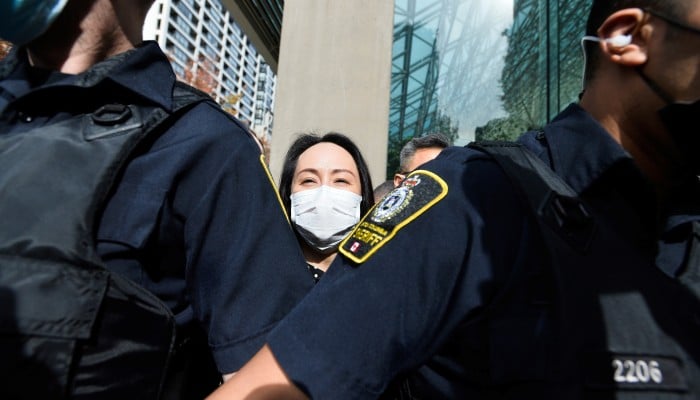
|
|
US-China relations: what comes next after release of Huawei’s Meng?
|
| • |
Chinese observers say case, and release of two Canadians, shows there is still room for compromise despite ongoing tensions | | | • | Some expect movement on lifting tariffs but other issues are likely to be much harder to resolve
|
|
|
The release of Huawei’s finance chief Meng Wanzhou has removed one of the most contentious issues bedevilling China-US relations, but Chinese analysts warned tensions were likely to continue in other areas. Meng, the daughter of Huawei Technologies Co’s founder Ren Zhengfei, reached a deal with American prosecutors on Friday that effectively ended the fraud case against her and allowed her to fly home from Canada. Read more
|
|
|
|
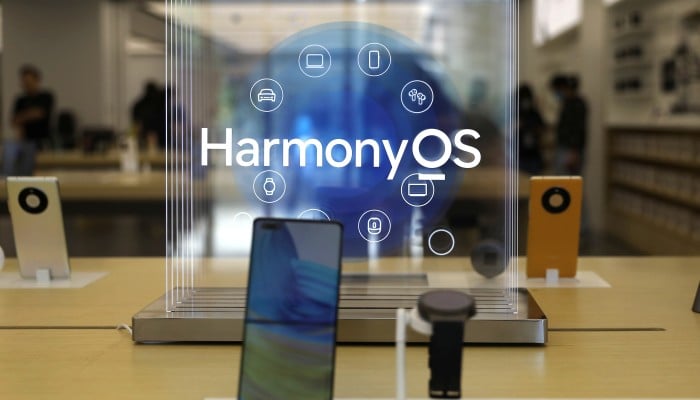
|
|
Huawei’s Android smartphone rivals keep their distance from HarmonyOS
|
| • |
Huawei has partnered with more than 1,000 hardware makers, 500,000 app developers and more than 300 service providers to support HarmonyOS 2 | | | • | Smartphone brand Honor, a former subsidiary of Huawei, is keeping its options open on the new mobile operating system
|
|
|
Huawei Technologies Co’s opening salvo for its HarmonyOS mobile platform to go mainstream, helping the telecommunications giant overcome US trade sanctions, has drawn thousands of partners, but also delivered a stiff reality check – none of its major Chinese Android smartphone rivals are on board. Huawei faces an uphill battle to convince other smartphone makers to change from Android to HarmonyOS over difficulties of “user conversion, compatibility issues and political risks”, which few vendors are willing to face, according to Chiew Le Xuan, an analyst at technology market research firm Canalys. Read more
|
|
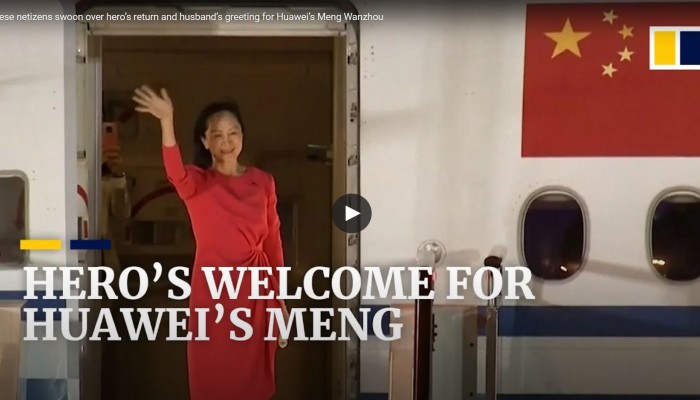
|
|
|
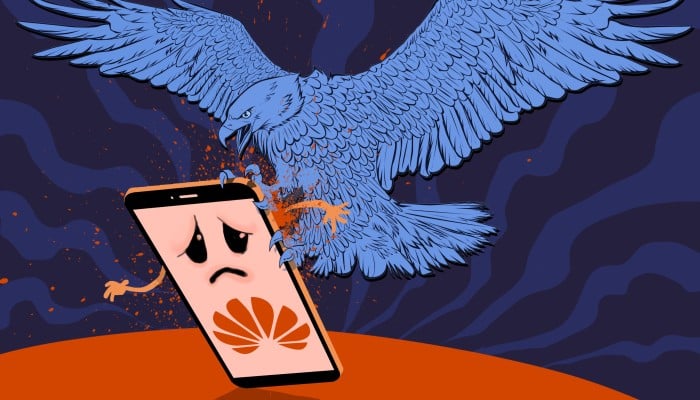
|
|
Huawei is still on the hook as Biden fine-tunes America’s strategy with China
|
| • |
The US Innovation and Competition Act earmarked US$54.2 billion towards shoring up America’s competence on a number of technological fronts, including chips production, and catch up on 5G technology | | | • | It also leaves Huawei on a list of restricted entities, banning it from gaining access to US hardware and software until it can prove that it no longer poses any threat to US national security
|
|
|
In the second of a five-part series on US-China technology policies under the Biden administration, Pan Che, Xue Yujie and Celia Chen take a look at how Huawei Technologies – the very first to come into the policy cross hairs of the former Trump administration – has fared nearly six months under the new regime, and what this says about the future of US-China relations over technology. The first part is here. A crucial piece of legislation wound its way this week through the United States Senate, dashing any hope that the new administration of Joe Biden would offer a friendlier stance than his predecessor towards China, particularly over technology. Read more
|
|

|
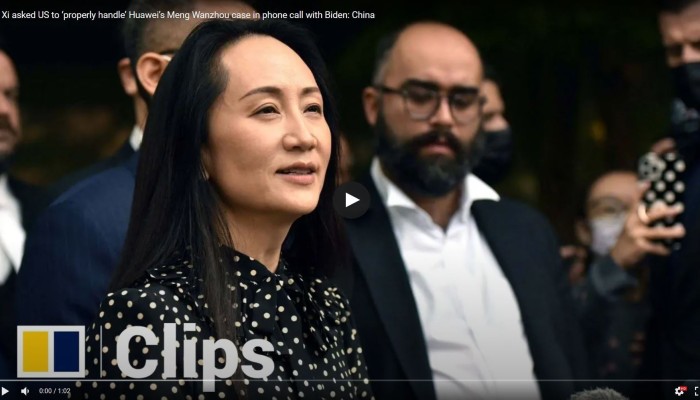
|
|
|
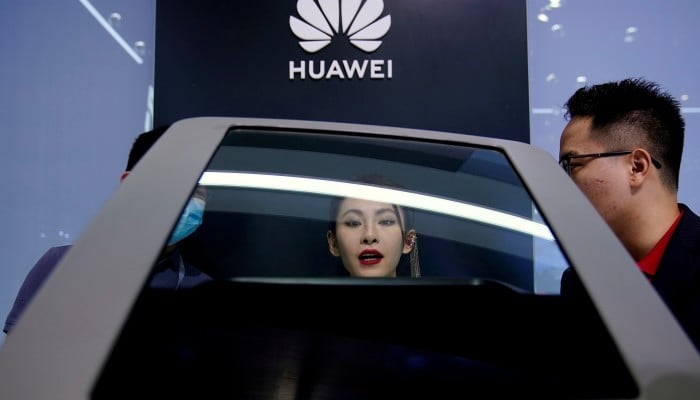
|
|
US Commerce Department denies easing restrictions on Huawei Technologies
|
| • |
‘The policy has not been eased or amended,’ a department spokesman says | | | • | An outcry followed reports that Huawei has won approval to purchase American-made automotive chips
|
|
|
The US Commerce Department has denied any loosening of its trade restrictions on Huawei Technologies – but did not refute reports that the Chinese tech giant has won approval to procure American semiconductors for its automotive parts business. “The policy has not been eased or amended,” a department spokesperson said on Friday. Read more
|
|
|
To keep track of the latest global news developments, follow our daily coverage on our website or focus on stories about Meng Wanzhou and Huawei.
In our next issue, our Asia desk will look at the controversy surrounding the Aukus alliance security pact between the United States, Britain and Australia.
We welcome your feedback. Email me at globalimpact@scmp.com or tweet me at @mdhaldane. Plus, be sure to check out our news feeds for the latest technology news.
All the best,
Matt Haldane
|

|
|
Matt Haldane
Production editor, Technology
|
|
|
|
|
|
| SCMP NEWSLETTERS THAT MAY INTEREST YOU |
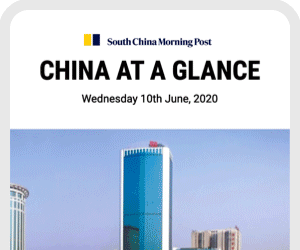
China at a Glance
A wealth of insights giving you the inside story on China every day.
China Economic Update
The latest developments from trade relations to growth rates and other key economic data.
Inside China Tech
Our weekend newsletter covering the biggest stories and updates from the tech centres of China.
VIEW AND SIGN UP
|
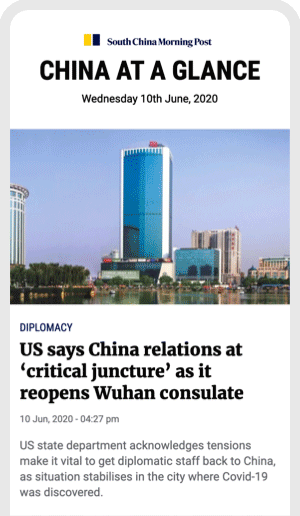
|
|
|
Download our app
To get push notifications direct and never miss a story as it breaks
|
|
|
|
|
Hong Kong
China
Asia
World
Economy
Business
Tech
Comment
|
|
|
|
This email was sent to [email]
unsubscribe from this list
update subscription preferences
South China Morning Post Publishers Ltd · 19/F Tower 1 · 1 Matheson Street · Hong Kong · Hong Kong
Copyright © 2021 South China Morning Post Publishers Ltd. All rights reserved.
|













